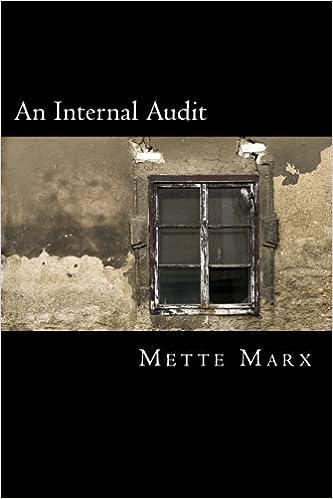Question
Babb Company is a manufacturing firm that uses job-order costing. The company's inventory balances were as follows at the beginning and end of the year:
| Babb Company is a manufacturing firm that uses job-order costing. The company's inventory balances were as follows at the beginning and end of the year: |
| Beginning Balance | Ending Balance | |||||
| Raw materials | $ | 12,000 | $ | 15,500 | ||
| Work in process | $ | 32,400 | $ | 14,700 | ||
| Finished goods | $ | 109,000 | $ | 122,000 | ||
| The company applies overhead to jobs using a predetermined overhead rate based on machine-hours. At the beginning of the year, the company estimated that it would work 17,800 machine-hours and incur $267,000 in manufacturing overhead cost. The following transactions were recorded for the year: |
| Raw materials were purchased, $413,000. | |
| Raw materials were requisitioned for use in production, $409,500 ($382,000 direct and $27,500 indirect). | |
| The following employee costs were incurred: direct labor, $337,000; indirect labor, $71,000; and administrative salaries, $159,000. | |
| Selling costs, $113,000. | |
| Factory utility costs, $20,000. | |
| Depreciation for the year was $122,000 of which $111,000 is related to factory operations and $11,000 is related to selling, general, and administrative activities. | |
| Manufacturing overhead was applied to jobs. The actual level of activity for the year was 14,700 machine-hours. | |
| Sales for the year totaled $1,291,000. |
| Required: | |
| a. | Prepare a schedule of cost of goods manufactured in good form. (Do not round predetermined overhead rate. Input all amounts as positive values. Omit the "$" sign in your response.) |
| Schedule of Cost of Goods Manufactured | ||
| Direct materials: | ||
| (Click to select)Finished goods inventory, beginningEnding work in process inventoryBeginning work in process inventoryRaw materials inventory, beginningRaw materials inventory, ending | $ | |
| (Click to select)DeductAdd : (Click to select)Ending work in process inventoryPurchases of raw materialsFinished goods inventory, beginningBeginning work in process inventoryRaw materials inventory, ending | ||
| Total raw materials available | ||
| (Click to select)AddDeduct : (Click to select)Ending work in process inventoryRaw materials inventory, endingRaw materials inventory, beginningPurchases of raw materialsBeginning work in process inventory | ||
| Raw materials used in production | $ | |
| (Click to select)AddDeduct : (Click to select)Direct laborIndirect laborRaw materials inventory, beginningDirect materialsIndirect materials | ||
| (Click to select)Finished goodsDirect laborIndirect laborIndirect materialsDirect materials | ||
| (Click to select)Raw materials inventory, endingDirect laborPurchases of raw materialsEnding work in process inventoryRaw materials inventory, beginning | ||
| (Click to select)Raw materials inventory, beginningManufacturing overhead applied to work in processPurchases of raw materialsDirect laborRaw materials inventory, ending | ||
| Total manufacturing cost | ||
| (Click to select)AddDeduct : (Click to select)Purchases of raw materialsEnding work in process inventoryBeginning work in process inventoryRaw materials inventory, beginningRaw materials inventory, ending | ||
| (Click to select)AddDeduct : (Click to select)Beginning work in process inventoryRaw materials inventory, beginningRaw materials inventory, endingPurchases of raw materialsEnding work in process inventory | ||
| Cost of goods manufactured | $ | |
| b. | Was the overhead underapplied or overapplied? By how much? (Do not round predetermined overhead rate. Input the amount as a positive value. Omit the "$" sign in your response.) |
| Manufacturing overhead (Click to select)underappliedoverapplied | $ |
| c. | Prepare an income statement for the year in good form. Prepare off-line Cost of Goods Sold Statement and close any underapplied or overapplied overhead to Cost of Goods Sold and use the Adjusted Cost of Goods Sold to answer this requirement. (Input all amounts as positive values. Omit the "$" sign in your response.) |
| Income Statement | ||
| (Click to select)Selling costsSalesCost of goods sold (adjusted)DepreciationDirect materialsAdministrative salaries | $ | |
| (Click to select)Administrative salariesSelling costsDepreciationSalesCost of goods sold (adjusted) | ||
| (Click to select)Gross lossGross margin | ||
| Selling and administrative expenses: | ||
| (Click to select)DepreciationDirect materialsAdministrative salariesRent expenseSelling costsInsurance expense | $ | |
| (Click to select)Selling costsDirect materialsAdministrative salariesDepreciationInsurance expenseRent expense | ||
| (Click to select)Rent expenseInsurance expenseSelling costsDepreciationDirect materialsAdministrative salaries | ||
| (Click to select)Net operating incomeNet operating loss | $ | |
Step by Step Solution
There are 3 Steps involved in it
Step: 1

Get Instant Access to Expert-Tailored Solutions
See step-by-step solutions with expert insights and AI powered tools for academic success
Step: 2

Step: 3

Ace Your Homework with AI
Get the answers you need in no time with our AI-driven, step-by-step assistance
Get Started


